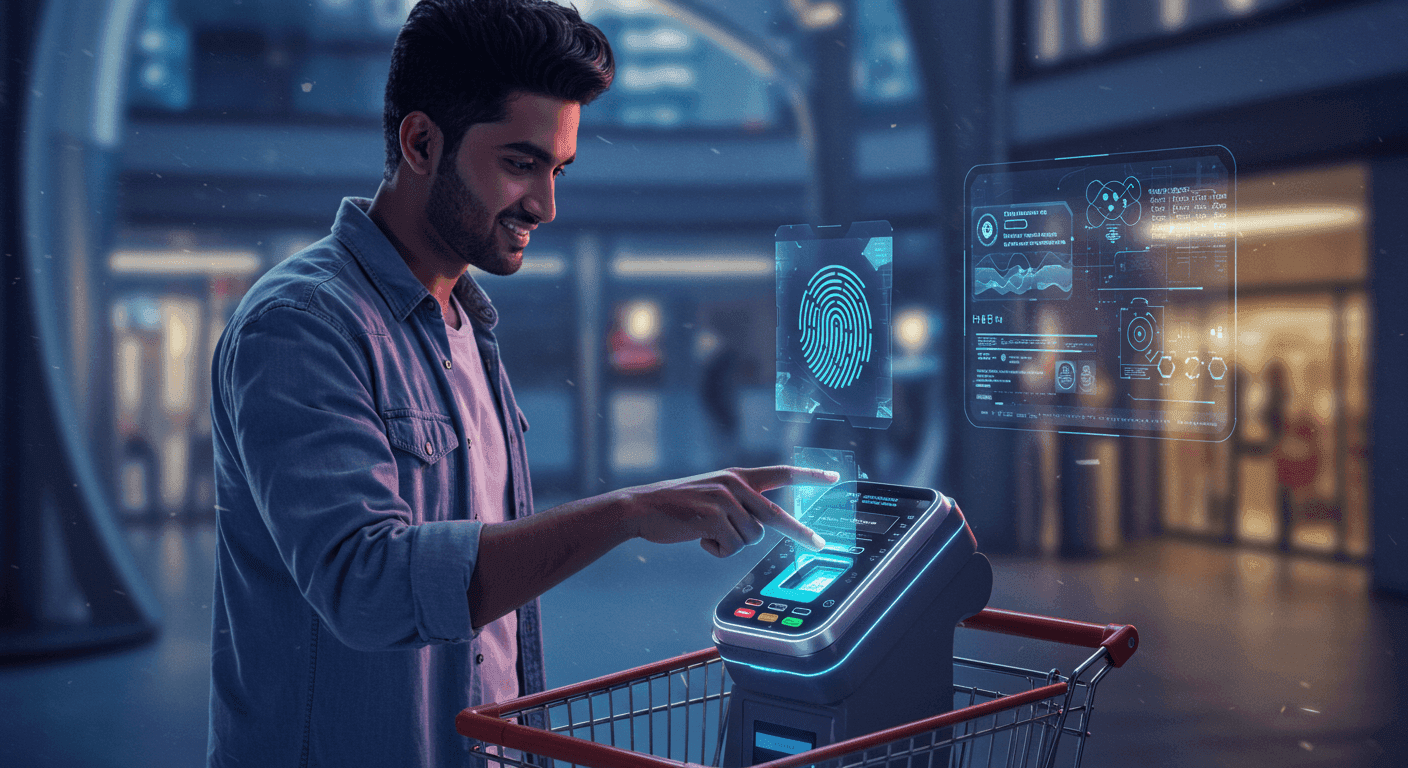Have you ever struggled to remember a password while making a quick payment?
Today, many people face problems like forgotten PINs, stolen cards, or slow payment approvals.
These small issues pile up, especially when you’re in a hurry or trying to buy something important.
The fear of losing money to fraud or having your payment blocked can make simple tasks feel frustrating. But what if a single touch could fix all of that?
Fingerprint scanning is slowly changing the way we pay — by making transactions faster, safer, and easier than ever before.
What Is Fingerprint Scanning, and How Does It Work?
Fingerprint scanning is a way of identifying someone using the patterns on their fingers. These patterns are unique to each person, like a natural password that can't be guessed or stolen. When you place your finger on a scanner, the device reads the ridges and lines of your print and compares them to what's stored.
Most modern fingerprint scanners use sensors that capture the image and convert it into data. This data is then matched with saved information to approve or deny access. You may have already used this on your phone, laptop, or even your office door.
Now, this same technology is being added to payment systems — making it possible to buy something with just your fingerprint.
Why Is Fingerprint Scanning Gaining Attention in Payments?
More people are shopping online and using contactless options. At the same time, payment fraud is growing. In 2023, global payment fraud losses hit $38 billion, according to Juniper Research. That’s a big number. People want faster and safer ways to pay — and they don’t want to carry cards or remember long PINs.
Fingerprint scanning helps solve this problem. It’s quick, easy, and only works for you. No one can steal your finger. Plus, many phones and digital wallets already support fingerprint features. That makes it easier for businesses to add fingerprint scanning to their systems.
Benefits of Using Fingerprint Scanning for Payments
There are several reasons why fingerprint payments are becoming popular:
-
Speed: A fingerprint scan takes less than a second. That’s faster than typing a password or inserting a card.
-
Security: Only your fingerprint works. This makes it harder for thieves to use your account.
-
Ease of use: You don’t need to remember anything. Just press your finger and go.
-
No extra device needed: Most smartphones already have fingerprint scanners. You don’t have to carry anything special.
-
Better user experience: People feel more in control when they don’t have to rely on passwords or cards.
Real-World Examples of Fingerprint Payment Systems
Some companies and countries have already started using fingerprint payments.
In India, the Aadhaar system links fingerprints to bank accounts. People in rural areas can make payments just by scanning their finger.
In Japan, some hotels and shops allow tourists to pay using fingerprint scans. No cash or card is needed.
Mastercard tested fingerprint cards that let people pay by pressing their finger on the card’s sensor.
Samsung Pay and Apple Pay already use fingerprint ID to approve payments on phones.
These early efforts show that fingerprint scanning can work well in real life. Many people say it's easy to use and feels safer than other methods.
Is Fingerprint Payment Safe? What About Privacy?
Safety is a big concern when it comes to fingerprint payments. The good news is, most systems don’t store your actual fingerprint image. Instead, they save it as a digital code, called a template. This template can’t be turned back into your real fingerprint.
Also, fingerprint data is often stored only on your device, not in the cloud. This keeps it safe from hackers.
Many fingerprint systems also use encryption. This means your data is scrambled and unreadable to anyone who tries to steal it.
Still, it's important to use trusted apps and devices. A weak system could still be at risk if it doesn't protect your fingerprint properly.
Will Fingerprint Payments Replace Cards and Cash?
Not right away. While fingerprint scanning offers many benefits, it may not replace all payment types soon.
Some places don’t have the right tools or internet access. Others may still prefer cards or cash. Also, not every person can use fingerprint scanners — like those with worn fingerprints or certain disabilities.
However, fingerprint payments may become a common option at shops, online checkouts, and public transport systems. It’s likely to grow side by side with other payment methods, not replace them fully.
Challenges and Concerns with Fingerprint Payment Systems
Even though it sounds simple, fingerprint payments come with a few challenges:
-
Scanner errors: Wet or dirty fingers might prevent the scanner from scanning properly. Devices can sometimes fail.
-
Not always inclusive: Some people can't use fingerprint scanning easily. This includes seniors, people with certain medical conditions, or those with damaged fingerprints.
-
Cost and setup: Small businesses may not want to invest in new machines or systems right away.
-
Privacy concerns: Even if data is encrypted, people still worry about storing their fingerprints anywhere.
These issues need to be addressed for fingerprint payments to be accepted everywhere.
What the Future Could Look Like with Fingerprint Payments
Imagine walking into a store, picking your items, and paying with a finger press. No card, no phone, no wallet.
You can catch a bus or train by tapping your finger at the entrance. Your fingerprint could also be linked to loyalty points or discounts.
Wearable devices like smartwatches might come with fingerprint sensors that make on-the-go payments even easier.
As more systems connect and grow smarter, fingerprint scanning could lead to a world where payments are not only fast — they feel invisible.
Conclusion
Fingerprint scanning is changing how we think about payments. It brings speed, security, and ease all in one simple touch.
While it won't replace cards or cash overnight, it’s becoming an important part of modern payment systems.
As the technology gets better and more people start using it, we may soon see a world where paying with your finger is just as normal as using your phone or wallet.
FAQs
Can fingerprint payments be hacked or faked?
Most systems use strong encryption and don't store actual fingerprint images, which makes it very hard to hack. But no system is 100% foolproof, so using trusted services is key.
Do fingerprint scanners work for everyone?
No. People with worn, damaged, or unreadable fingerprints may have trouble. Some systems offer face ID or PIN as backup.
Are fingerprint payments faster than mobile wallets?
Yes. Fingerprint payments skip password or face scan steps, making them quicker in many cases.





